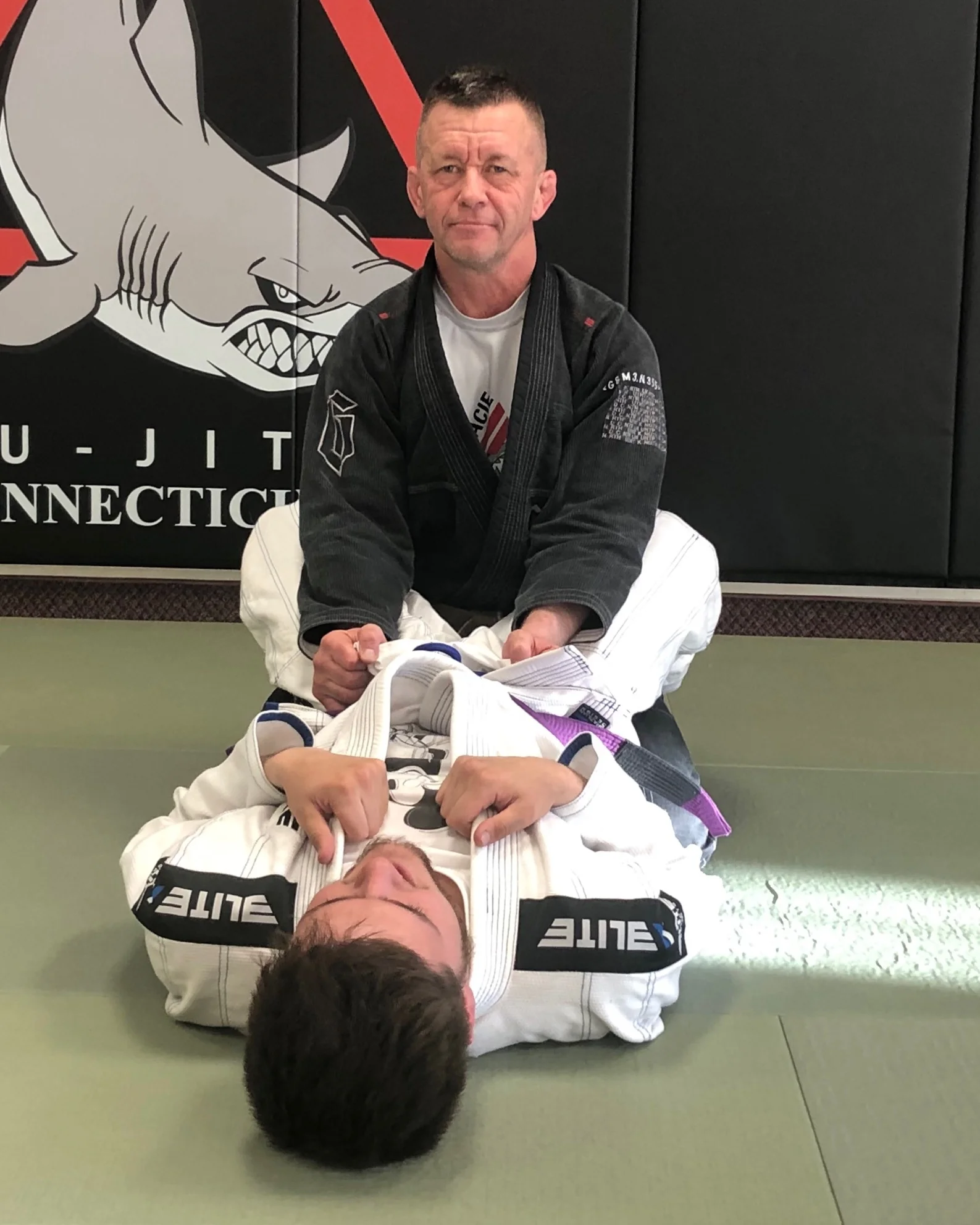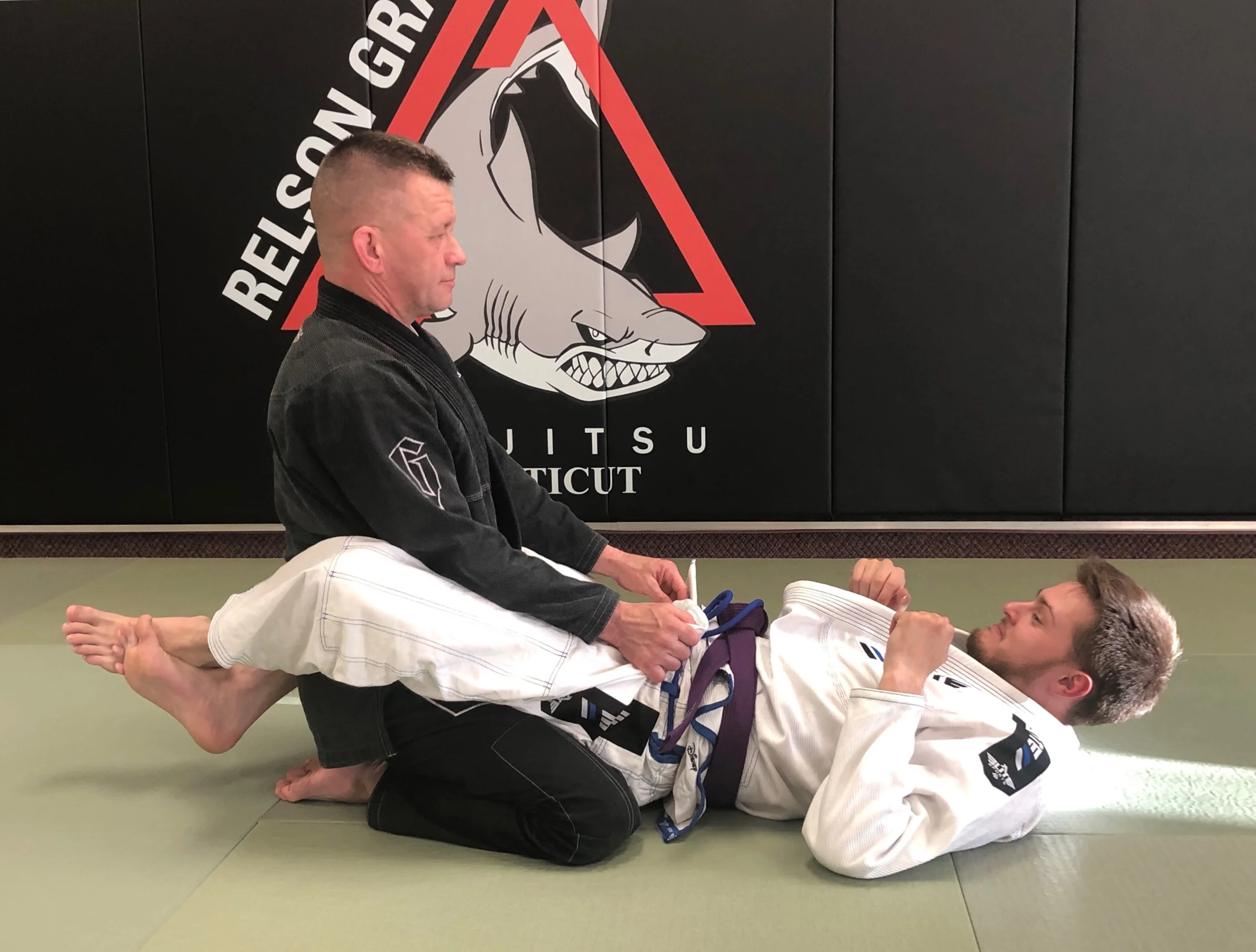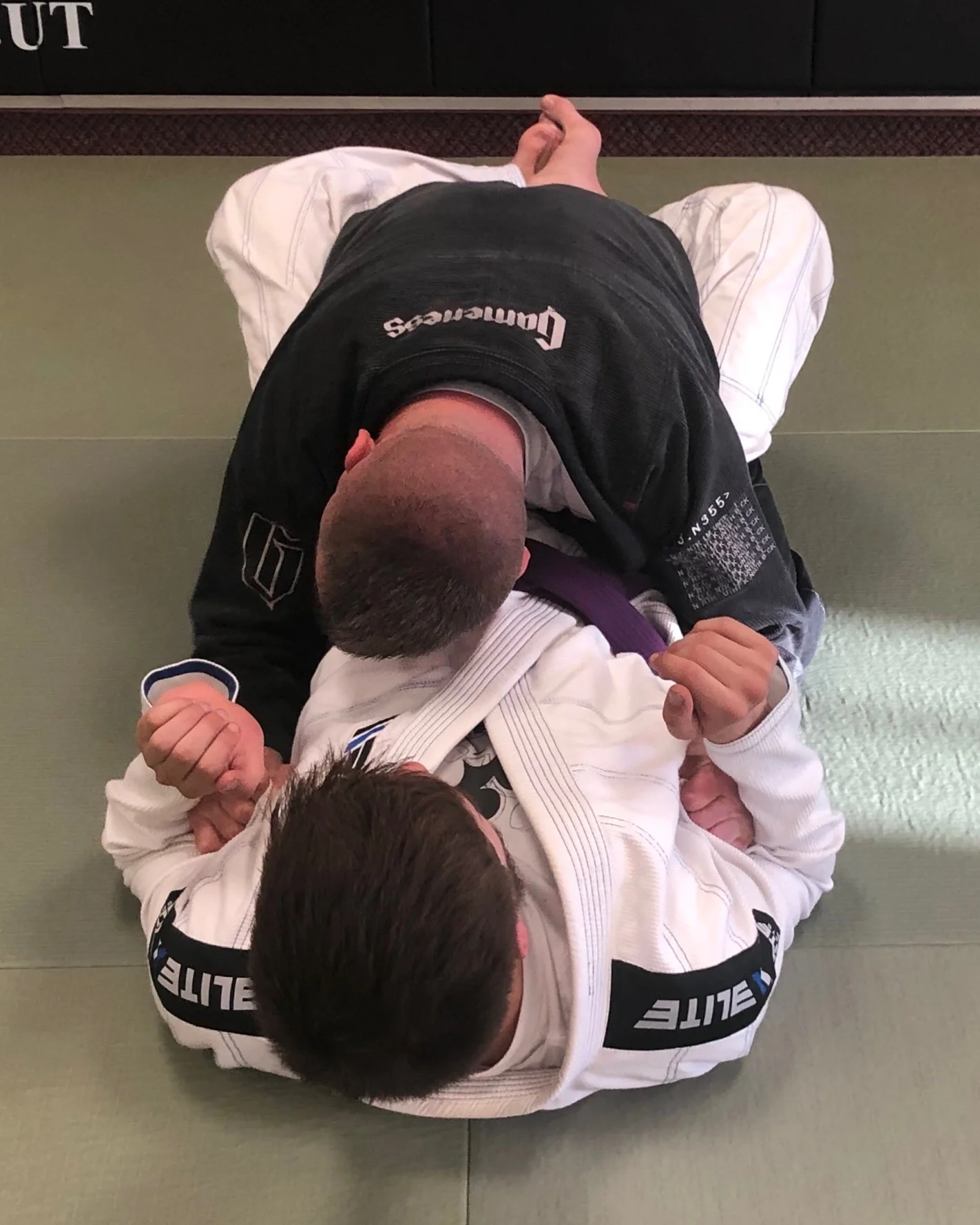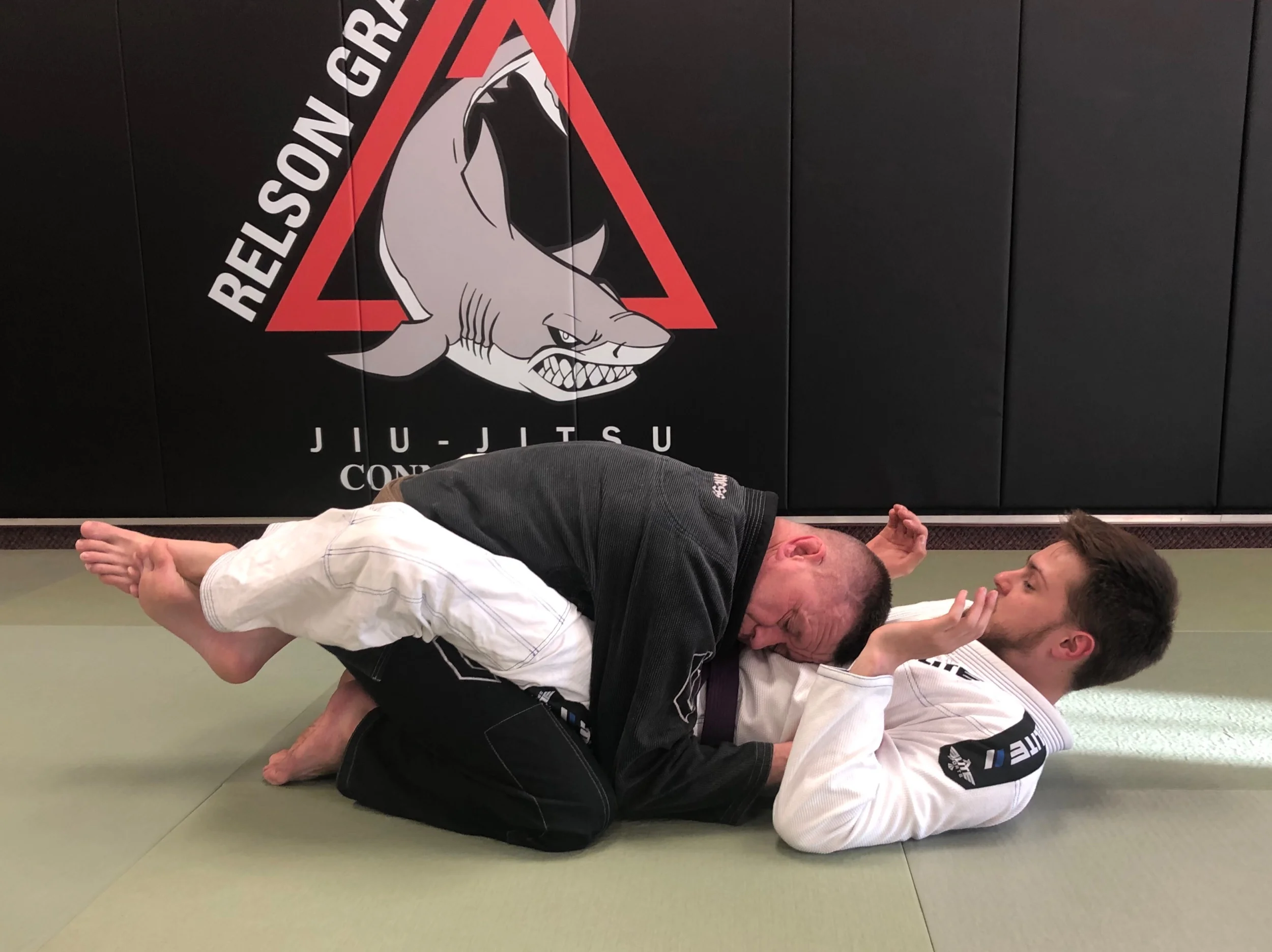Positions
This page is a guide to the most commonly-used positions in Gracie Jiu-Jitsu. It is still a work in progress, so please excuse any typos, placeholder images, or missing information.
Back Mount
Back mount is the most dominant position.
Position yourself so your opponent is facing away from you.
Wrap your legs around your opponents waist, hooking your heels inside his thighs (called “hooks”).
DO NOT cross your feet or hook your toes under his thighs. Doing so may cause you to get heal hooked.
Keep your face turned to the side and tight against his back.
Secure his upper body (torso, arms, or neck) with your own arms, like a seat belt.
Stay as tight to your opponent as possible.
Front Mount
Front mount is the second most dominant position.
Straddle your opponent’s torso with your knees on the ground (one on each side of his body).
Sometimes, due to size differences between yourself and your opponent, your knees may not reach the ground. Do your best!
Keep your toes inactive.
Sit tall for demonstration or self-defense purposes, or stay low for sport Jiu-Jitsu.
S-Mount
S-Mount is named as such because you are mounted on your opponent with your legs in an S-shape.
One foot should be under his shoulder.
Your other knee should be under his other shoulder.
Flare this lower leg and foot away from him so as to keep a solid base.
Stay heavy by keeping your hips low.
Side Control
Side control is often where one ends up after passing the guard. It is a useful position from which many submissions are available, as well as transitions to front mount.
Position yourself so your chest is at a T-intersection with his chest.
Keep your hips low so as to stay heavy.
Extending your leg - the one closest to his head - will help with this.
Ensure that your knee - the one closest to his hip - is tightly connected to his hip.
Ensure both your elbows are on the ground, with one tight to his neck and the other tight to his hip.
Kesa Gatame
We’re still working on this. Check back later!
Reverse Kesa Gatame
We’re still working on this. Check back later!
Knee On Belly
We’re still working on this. Check back later!
Closed Guard
Dominant Position (person on their back)
If you are the person on your back, your legs should be wrapped around your opponent’s waist with your ankles crossed.
While not shown here for demonstration purposes, always have grips with both hands. These can consist of your opponent’s lapels, legs, ankles, neck, wrists, etc. or some combination of those.
Non-Dominant Position (inside the guard)
Stay either high or low, avoiding anything in between.
High Position
Sit back on your ankles.
Keep your chest and head up.
Secure the material of his pants with both hands, pushing your fists into his hips. For the no-gi variation, simply push down on his hips with open hands.
If your opponent attempts to sit up and grab you, push him back down with an open hand.
Low Position
Keep your head low against his chest or belly.
Secure his biceps with both hands, grabbing gi material if available.
Open Guard
Open guard involves controlling your opponent’s hips without having your ankles crossed. There are many ways to do this, including positioning a foot on his bicep (1st picture) or establishing X-guard (2nd picture), butterfly guard, de la riva, 50-50 guard, etc.
Half-Guard
We’re still working on this. Check back later!
North/South
The north/south position is named as such because it involves both training partners facing opposite directions, with respect to their feet and heads.
Position yourself with your belly on your opponent’s face.
Place both your elbows inside his armpits, one on either side of his body.
Use your hands to block his hips, grabbing his belt if possible.
X-Guard
The X-Guard position is a type of open guard that requires the person on the bottom to secure his opponent’s leg with both feet. The bottom player’s shins will look roughly like an “X”.
Position yourself on your back, underneath your opponent.
Place the top of your front* foot behind your opponent’s knee.
Place the top of your back* foot against your opponent’s inside hip crease.
Use your shins to keep pressure against his leg.
Keep your knees wide.
Reach under his other leg, and secure his knee so that he can’t collapse it onto your body. At this point, his ankle should be right against your shoulder.
* In this case, “Front” and “Back” refers to the position of your arms and legs with respect to your opponent’s torso. In the example shown, Coach Daniel’s left leg is in front of Tyler’s torso, and his right leg is in back of Tyler’s torso.



